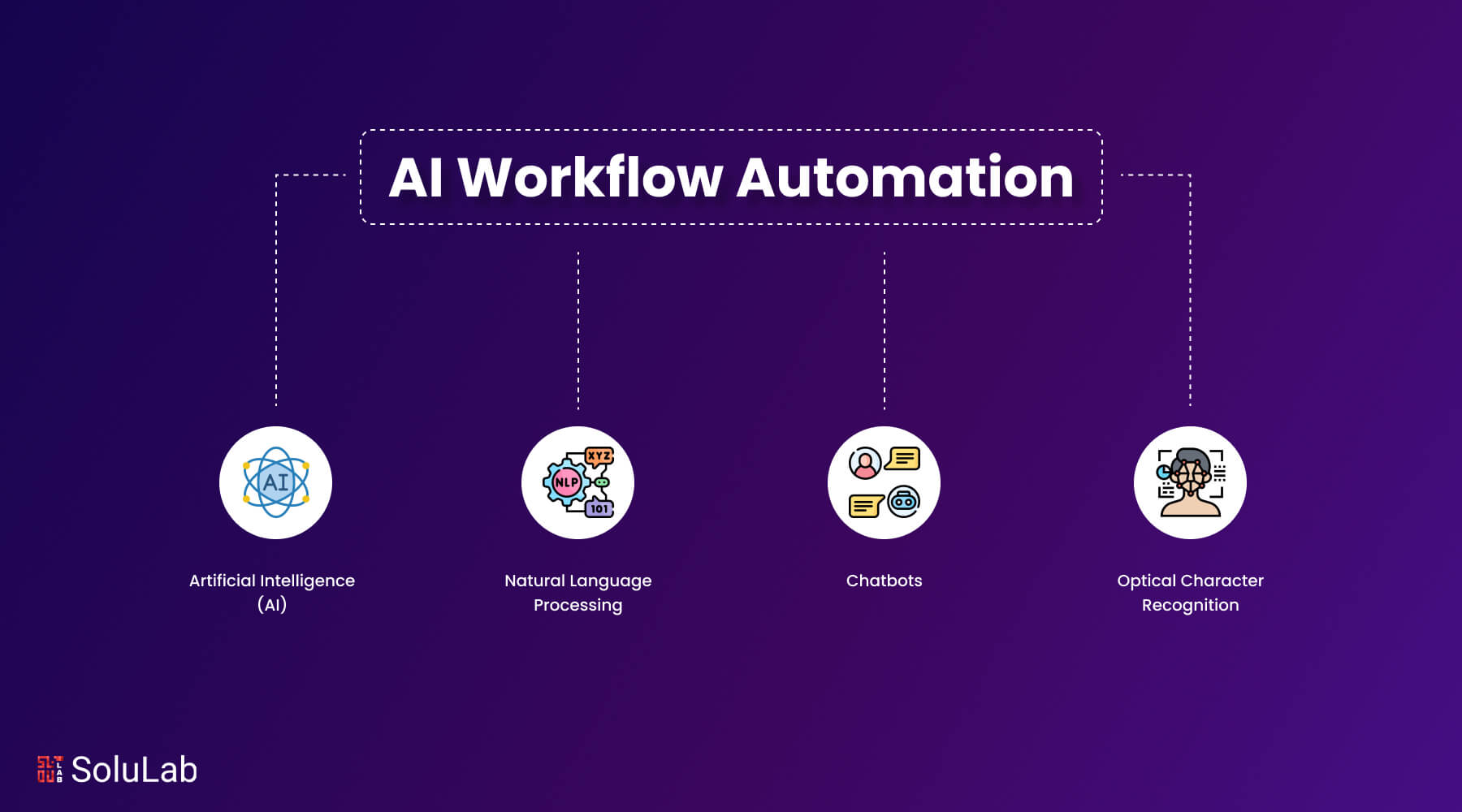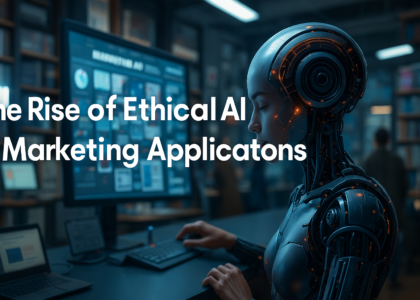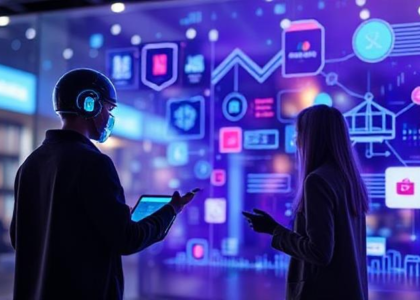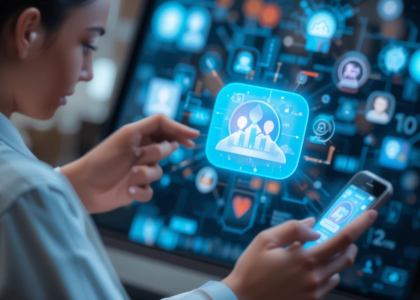Introduction
In today’s fast-evolving digital landscape, marketers are increasingly turning to advanced technologies to create more personalized, efficient, and engaging customer experiences. Among the most transformative technologies reshaping marketing are Artificial Intelligence (AI) and the Internet of Things (IoT). Individually powerful, these technologies together offer brands a new frontier of connected experiences, enabling real-time data collection, intelligent automation, and predictive engagement strategies. This article explores how AI and IoT are converging to create smarter, more connected marketing experiences.
Understanding AI and IoT in a Marketing Context
Artificial Intelligence in marketing refers to the use of machine learning algorithms, data analytics, and automation to understand consumer behavior, predict outcomes, and optimize marketing efforts. The Internet of Things encompasses physical devices connected to the internet, collecting and exchanging data.
In a marketing context, IoT includes devices like smart speakers, fitness trackers, connected cars, and retail sensors. When combined, AI analyzes the vast data from IoT to generate actionable insights, enabling brands to deliver timely, personalized content and offers.

The Evolution of Connected Consumer Experiences
The journey from traditional marketing to digital and now to connected experiences marks a significant evolution. While digital marketing focused on online engagement, connected marketing bridges digital and physical touchpoints through data-driven insights. Omnichannel strategies, powered by AI and IoT, ensure consistency and relevance across platforms, reshaping the consumer journey from discovery to post-purchase engagement.

Real-Time Personalization Through AI and IoT
IoT devices continuously generate real-time data—such as location, behavior, and usage patterns—that AI uses to tailor marketing efforts dynamically. For example, smart retail systems can detect when a customer enters a store and push personalized offers to their smartphones. In the hospitality industry, connected hotel rooms can adjust ambiance based on guest preferences, while in automotive, AI can recommend services or routes based on driving behavior.
Predictive Analytics and Behavioral Insights
One of the greatest advantages of combining AI and IoT in marketing is predictive analytics. AI can anticipate customer needs by analyzing patterns from IoT data, allowing businesses to engage proactively. For instance, a smart fridge that detects low milk levels can prompt a grocery app to suggest a reorder. These insights help marketers offer relevant solutions even before a customer expresses a need, improving conversion rates and customer satisfaction.
Enhancing Customer Engagement with Smart Devices
Smart devices like wearables, smart speakers, and connected appliances serve as new marketing touchpoints. Voice assistants can provide product recommendations, while fitness bands can share user activity data (with consent) for customized fitness product promotions. These technologies allow brands to engage users in the moment, with contextually relevant messaging that feels natural rather than intrusive.
Data Collection, Management, and Security
With great data comes great responsibility. IoT devices collect a vast range of information—location, biometrics, preferences—which must be managed securely. AI assists in organizing and interpreting this big data efficiently, but companies must prioritize privacy and compliance. Regulations such as GDPR and CCPA necessitate transparency, ethical data usage, and robust cybersecurity measures to maintain trust.
Smart Environments and Retail Innovation
Brick-and-mortar stores are evolving into smart environments equipped with IoT sensors, beacons, and smart shelves. These technologies collect foot traffic data, analyze customer behavior, and optimize product placements. For example, heatmaps generated by in-store sensors can highlight high-engagement zones, guiding promotional display placements for maximum impact.

AI-Driven Automation in Marketing Workflows
AI simplifies complex marketing operations through automation. It can segment audiences, personalize content, automate email campaigns, and even generate dynamic content in real time. Virtual assistants and chatbots powered by AI provide 24/7 customer support, while IoT data enhances their responsiveness by offering situational context.

Role of 5G in Advancing AI and IoT Marketing Synergies
5G’s ultra-fast speeds and low latency are pivotal in enhancing the synergy between AI and IoT. With 5G, real-time data transmission becomes seamless, enabling instantaneous personalization and hyper-responsive marketing. For instance, augmented reality (AR) ads streamed through wearable devices can adjust in real time based on user interaction and environmental data.
Case Studies of AI + IoT in Marketing
- Coca-Cola: Utilized IoT-enabled vending machines that gathered user data and adjusted product offerings based on preferences and weather.
- Nike: Developed smart sneakers that connect to apps, track athletic performance, and suggest gear or training programs.
- Marriott Hotels: Created connected rooms where guests could control lighting, temperature, and media with voice assistants, offering a hyper-personalized stay.
Benefits of Integrated AI and IoT Marketing Strategies
Integrating AI and IoT brings a host of benefits:
- Enhanced Customer Experience: Hyper-personalized and relevant content boosts satisfaction.
- Operational Efficiency: Automated processes reduce manual workloads and errors.
- Improved ROI: Targeted campaigns lower acquisition costs and improve conversion rates.
- Customer Retention: Personalized engagement fosters brand loyalty and lifetime value.

Challenges and Limitations
Despite the benefits, integration comes with challenges:
- Complex Implementation: Aligning diverse systems requires technical expertise.
- Data Privacy: Managing sensitive data demands strict adherence to regulations.
- AI Bias: Misinterpreted data or biased algorithms can lead to flawed personalization and erode trust.
Future Trends in AI and IoT for Marketing
Several exciting trends are shaping the future:
- Edge Computing: Processing data closer to the source for faster decision-making.
- AI-Generated Content: Using IoT inputs to generate content automatically.
- Anticipatory Marketing: Predicting and fulfilling customer needs proactively. These innovations promise even deeper levels of personalization and responsiveness.
How to Start Implementing AI and IoT in Marketing
To begin integrating AI and IoT:
- Strategic Planning: Define clear objectives and use cases.
- Stakeholder Alignment: Gain support across departments.
- Technology Stack: Choose platforms that support interoperability.
- Continuous Feedback: Use insights to refine strategies over time.
Start small, test rigorously, and scale based on performance and user feedback.
Conclusion
AI and IoT are revolutionizing the marketing world by creating more intelligent, connected, and customer-centric experiences. These technologies enable brands to engage with consumers in real-time, with unprecedented relevance and precision. While challenges exist, the potential rewards in customer loyalty, operational excellence, and competitive advantage are immense. Brands that harness the power of AI and IoT today will lead the charge into the next era of digital marketing.





